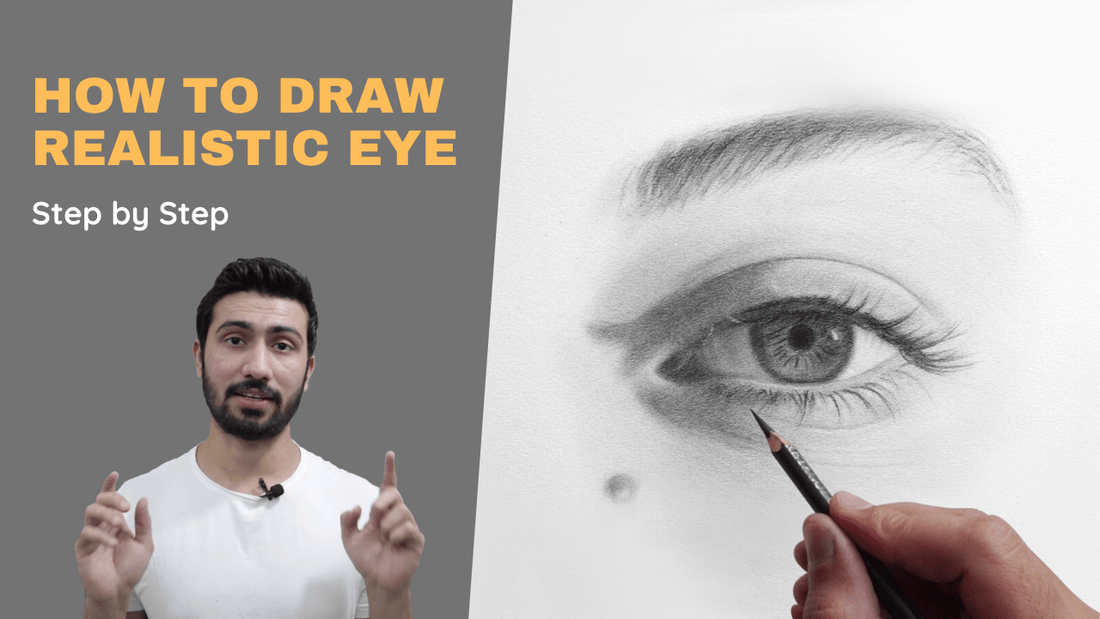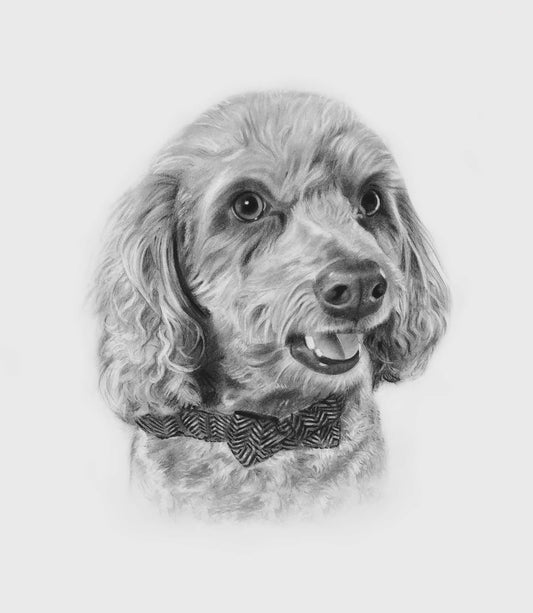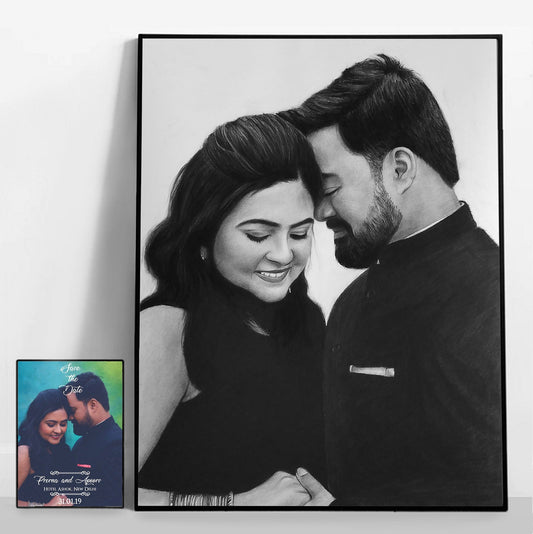
(New Way) Learn How to Draw Realistic Eye | With Video Tutorial
Share
Today, I am going to show you how to draw a Realistic Eye,
Step by Step…
Drawing and shading are two different things, So I will teach you both separately.
And after reading this post, you will be able to draw any eye from any photo.
So, let's start.
PART 1- DRAWING
There are many ways to draw anything, and according to the method we need different materials.
And for this, you just need some basic material
- 1 Pencil - I am using graphite 2H Pencil of Staedtler Mars Lumograph brand.
- 2 Divider - The divider has an important role in this method to calculate distance between the lines
- 3 Eraser - There is no need to use any specific eraser for drawing, you can use whatever is available with you, I am using here Mono Zero eraser
-
4 Print Out of Reference Photo - For this method specifically, the size of your printout should be half of your drawing paper
- 5 Drawing Paper - I use Strathmore Bristol 400 Series paper in almost every work.

Now you have the right material, so let's begin drawing.
Step #1. Find Its Placement
First, you have to find its correct placement, for example, where it should be drawn on the paper? (on the top, bottom, or in the middle)
Ideally, it should be in the Middle

Step #2. Mark Overall Points
As we get its correct placement, now it's time to measure overall points,
And the overall point is the total length and height of the eye. as you can see here.

Note: White color marks are the overall points of Iris.
Let's start with its length first…
To get its length, simply open your divider and measure the total distance like this, and then mark it on drawing paper.


And after that, your result would be like this.

Till now, you have got only the eye's overall point. Just follow the pictures given below to get Iris as well.


And by the same process, measure its height. And after that again your result would look like this.

Step #3. Draw Curve lines
As you can see, The lines that are not straight all are the curved lines

Directly drawing any curve line is a bit difficult, So before starting any curve line always do Angle Break first
Angle Break – is a process, where we break any curve line from its angle. Like this.

As soon we break this line from angles, we get these 4 lines. Now we have to draw them one by one,
But always start from the straight line, like in our case this line is straight, that's why I'll draw this first

To draw any line, you need to observe only two things, its Angle and Its Length.
Let's understand this one by one
Angle – To find the angle of any line, Just hold your pencil Straight (horizontally) along the line. And you will get a rough idea of its angle.

Length – To find the length, draw both lines in the upward direction and see which point is touching or have nearest with the point we have already drawn

Note: if you're not a beginner, then you don't need to follow every step exactly the same. just draw as accurately you can.
After that start draw these corner parts,

To draw these corners, just follow these steps…
- Draw a straight line horizontally and see where is the iris part crossing from (in our case it's crossing from the center)
- Measure the distance from iris to this point with a divider like this
- And after that, just join all lines to this point.

- And in the same way, draw the other side and the rest of the lines as well.
Then here our eye drawing is completed.

Now let's move to the Shading part.
PART 2- SHADING
Animated GIF of Shading Process.

Always do these two things before you start shading.
- Convert your photo into black and white
- Separate the Shadow Part

Every photo has different values, So don't get confused,
I am here :)
I already divided all processes into layers, and you can even call them steps.
So let's start with the first layer…
Layer 1. Start Shading with Average value
Before you start shading, just know the difference between them,
- Value – Darkness or lightness of any object or specific area
- Average Value – While shading any object you don't make it too dark and too light, then the value you get is an average value
For example, In our reference photo,
The shadow part is as dark as 8B pencil and the lighter part is as dark as 2B,

but as I said don't make it too much darker at 1st layer, always keep this a bit lighter than original
So that's why I am replacing 8b with 2B for the darker part and using 2h instate 2B for the lighter part

and after that, just start Shading from darker part 1st and then lighter part, and your result would be similar to this

To get such smoothness, I have smudged the entire eye with a cotton
Layer 2. Add more Darkness with Details
In the first layer, we kept the shading a bit lighter, but in this layer, we will add more darkness with more details.
So Just find the darkest and lighter point at first.
and as you know In each eye, the Pupil is darker, and the Highlighted part above the cornea is the lighter part,
and then start shading with them...

For Pupil – I use a pencil with pressure to get darker value, but still, I added up to 80% darkness, not 100% with comparing to the reference photo.
because it's still the second layer, not the final one

For Highlight – I used Mono zero eraser, If you have a normal eraser then use its sharper edges to get the similar result

and now you have darker, lighter, or average value, to compare the rest of,
So just do shading rest part with comparing each of them


And this is our final result of the second layer
Layer 3. Finalize Overall Shading again
This is our final layer, in this, you can add 100% darkness, and avoid using cotton to smudge this, even if you're using it, use it with a light hand
And just do shading until It's become perfectly fine according to you
and here you can see my final result, I am hoping you also get similar one

You should remember while shading!
- Always smudge with cotton or brush after shading
- Always start shading the dark part first and then the lighter part
- Avoid adding full darkness until the final layer
- Control your hand pressure according to the darkness or lightness of that specific area
I hope this method will help to draw an eye,
and if you still have any questions regarding this, just leave a comment right now
To know in detail, Watch this full video,
Language (Hindi), But available with English(CC)









